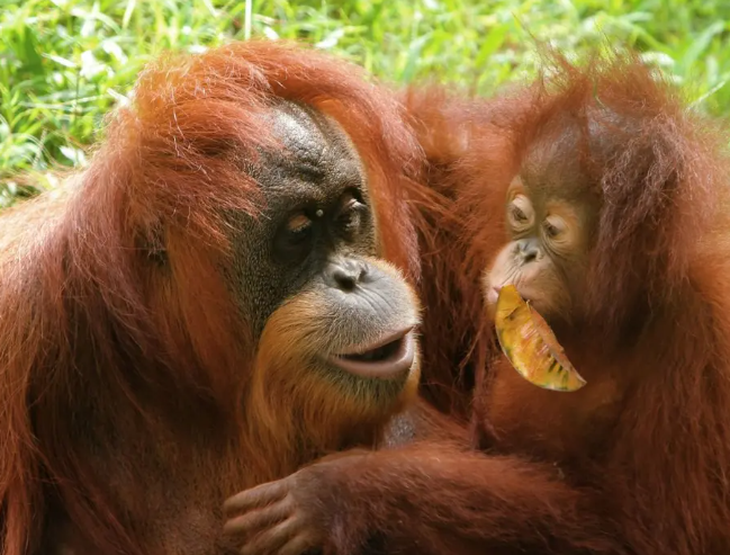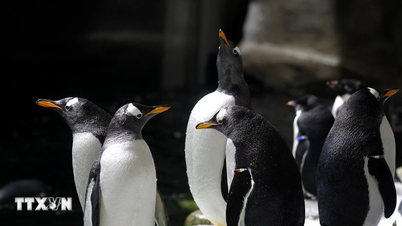
Scientists have discovered that wild orangutans communicate with multi-layered complexity - a trait previously thought to be unique to humans - Photo: EARTH.COM
In a groundbreaking study from the University of Warwick (UK), scientists have discovered that wild orangutans communicate with multi-layered complexity - a trait previously thought to be unique to humans, suggesting that the ability has much older evolutionary roots than previously thought.
Recursion—the repetition of linguistic elements in a nested manner to form a comprehensible phrase—has long been considered a unique feature of human language. Like nesting Russian dolls, the power of recursion allows a finite set of elements to be combined to convey an infinite number of messages of increasing complexity.
"When we analysed acoustic data from female Sumatran orangutan alarm calls, we found that the rhythmic structure of the sound was nested across three levels - a striking form of third-order recursion. This finding challenges the view that recursion is a uniquely human characteristic," said Dr Chiara De Gregorio, a research fellow at the University of Warwick.
The three-layer (recursive) structure of orangutan calls includes: individual sounds appear in small clusters (first cluster), these clusters can be grouped into larger bursts (second cluster), and these bursts can be grouped into even larger sequences (third cluster), all with a regular rhythm at each level.
Like a piece of music with repeating patterns, orangutans layer one rhythm onto another, creating sophisticated multi-layered sound structures that were previously considered impossible in large non-human primates.
Remarkably, orangutans also change the rhythm of their alarm calls depending on the type of predator: when they see a real threat, such as a tiger, the calls are faster and more urgent. When they see something that looks threatening but is not really dangerous (such as a patch of cloth with colored spots), the calls are slower and less regular.
"This discovery suggests that the origins of one of the most striking features of human language – recursion – were present in our evolutionary past," Dr De Gregorio concluded.
This study is the first experimental evidence that these powerful recursive abilities may have been selected for and evolved gradually from a much more ancient ancestor.
Source: https://tuoitre.vn/sung-sot-duoi-uoi-co-ky-nang-giao-tiep-giong-con-nguoi-20250519115111851.htm



![[Photo] Ho Chi Minh City holds funeral for former President Tran Duc Luong](https://vphoto.vietnam.vn/thumb/1200x675/vietnam/resource/IMAGE/2025/5/24/9c1858ebd3d04170b6cef2e6bcb2019e)
![[Photo] Party and State leaders visit former President Tran Duc Luong](https://vphoto.vietnam.vn/thumb/1200x675/vietnam/resource/IMAGE/2025/5/24/960db9b19102400e8df68d5a6caadcf6)



























































































Comment (0)